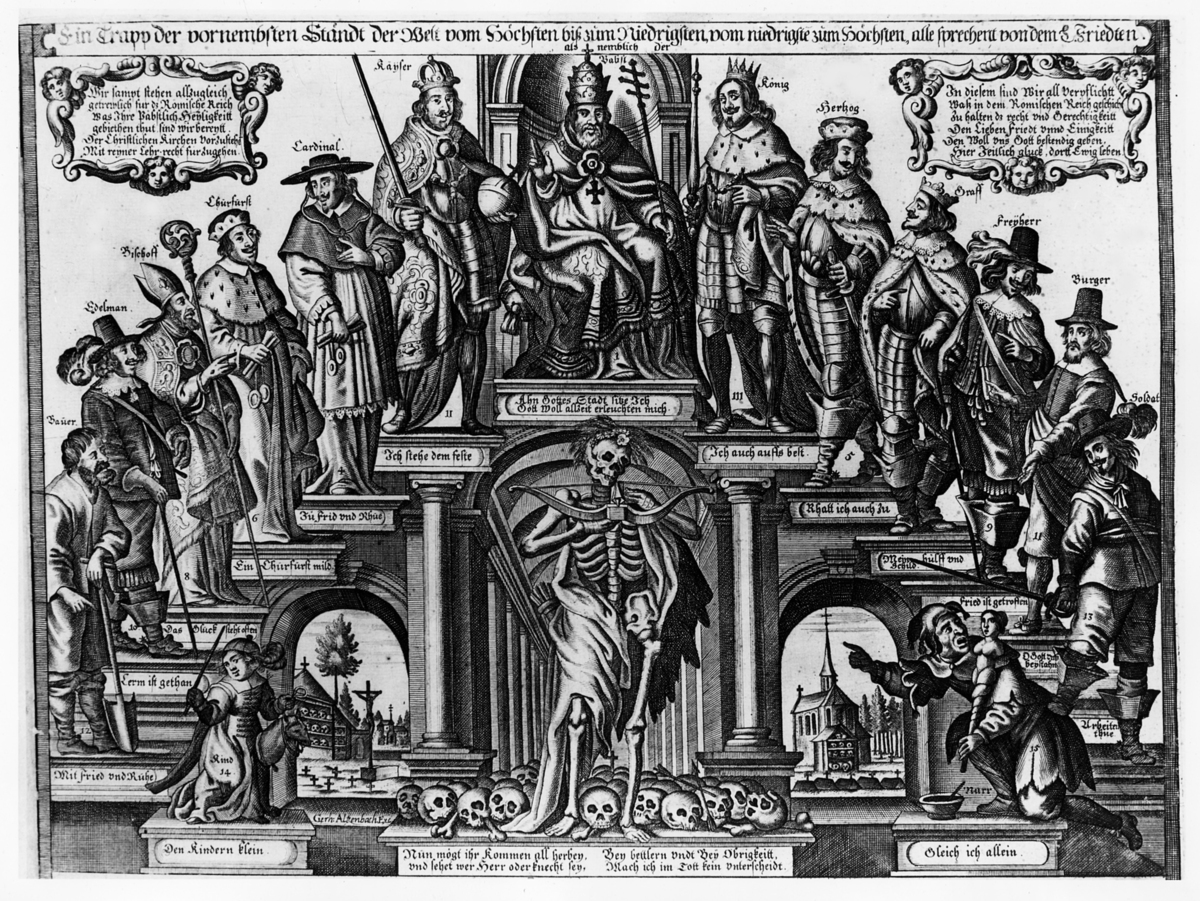Gradations of Imperial Identities: Ständehierarchie (c. 1650)
Abstract
This mid-seventeenth century engraving by Gerhard Altzenbach (before 1590–after 1672) depicts the hierarchy of the different estates [Ständehierarchie] in the Holy Roman Empire. The pope is at the top and in the center; he is flanked by the emperor and the king. The cardinals and bishops take their places on the left side, emphasizing the importance of confession in the social order. The two inscriptions (near the upper right and left corners) emphasize the importance of upholding the proper social order—this being regarded as the prerequisite for the pursuit of peace throughout the realm. Both inscriptions make reference to the “Empire,” and this introduces an element of “Germanness” into a social order otherwise dominated by the categories of estate and confession.
Source

Source: Gerhard Altzenbach, Allegorical depiction of the order of estates in Germany in the 17th century, c. 1650. Image no. 30009827, bpk-Bildagentur.
© bpk
Further Reading
Paul Münch, Lebensformen in der frühen Neuzeit, 1500 bis 1800. Berlin: Propyläen, 1992.